Making your own spreadable butter at home is easy and delicious! Just two ingredients and you'll have delicious butter that is easy to spread.
I've been making my own spreadable butter for about a year now. I started after trying some that I bought at the grocery store that was absolutely delicious.
It was simply a combination of butter and olive oil, but that real butter flavor was irreplaceable. Margarine just isn't the same.
Prior to that, I had been using margarine to spread on my toast and sandwiches, and butter for baking and cooking.
I want to make it very clear that I have no problems whatsoever with the nutritional aspects of margarine. It has gotten a bad rap over the last couple of decades, which is unwarranted now that trans fats are not used.
After all, margarine is lower in saturated fat than butter, and it's spreadability makes it a lot more convenient.
But compared to butter, I just don't find margarine to be as tasty. Enter Spreadable Butter, which just might be the best of both worlds.
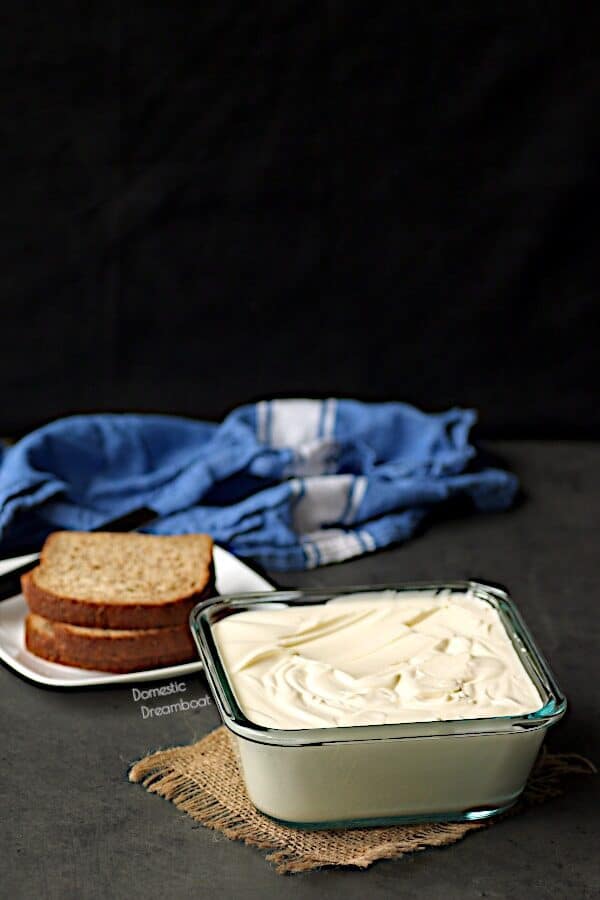
What are the benefits of homemade spreadable butter?
It can be cheaper than buying it from the store
It tastes better than margarine
It has less saturated (unhealthy) fat, and more heart-healthy fats than butter
You can control how much salt is added to it
It's more convenient than using butter because it's easy to spread straight out of the fridge
You can keep it in the fridge all the time, so it lasts longer than keeping butter at room temperature, which can go rancid quickly
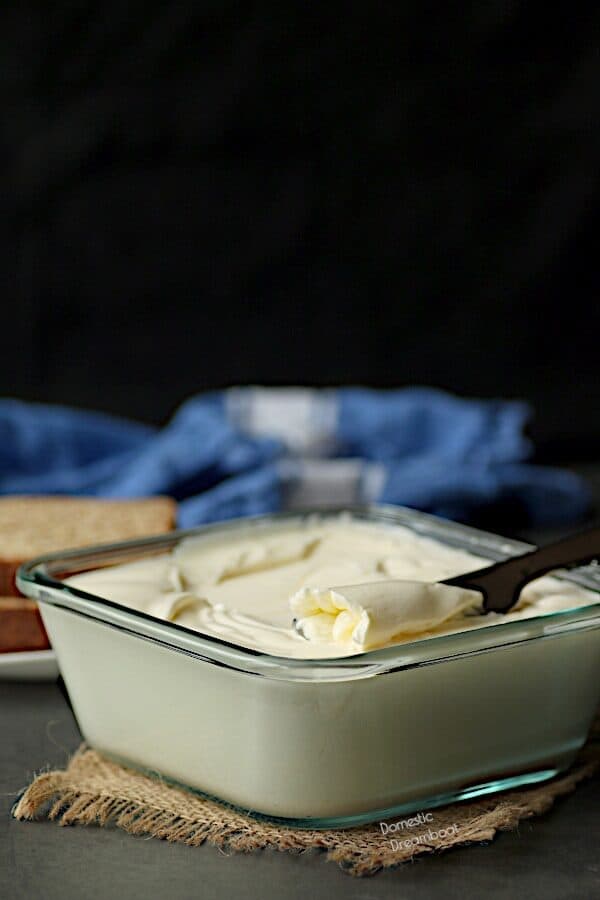
How do you make spreadable butter?
It's easy!
All you need is 2 (or 3) ingredients:
Butter (salted or unsalted)
Canola or other neutral flavored oil
Salt (if using unsalted butter and you want your spreadable butter to be salted)
Simply mix these ingredients together using a mixer or food processor until the mixture is smooth.
How do you use spreadable butter?
The best way to use your homemade spreadable butter is as a spread for toast, bread, or other baked goods.
However, it can also be used to replace butter or margarine in many recipes in a 1:1 ratio. Don't try to use it in pastry recipes that require chilled butter (like pie dough, biscuits, or scones).
Can I use a different type of oil to make spreadable butter?
I always use canola oil to make spreadable butter because it's economical, widely available, and doesn't contribute a strong flavor to my butter.
However, you can choose to use another type of oil if you'd like.
I strongly recommend using a neutral-flavored oil if you want your butter to taste as much like butter as possible. This might also include vegetable oil, grapeseed oil, avocado oil, corn oil, or safflower oil.
You can also choose to use olive oil, but it will likely contribute a stronger flavor than the above oils.
I don't recommend using coconut oil, as it remains solid at room temperature, and will make your butter hard and less spreadable.

Want more homemade condiment recipes?
Spreadable Butter Nutrition Notes:
Compared to regular butter, homemade spreadable butter has less saturated fat, naturally occurring trans fats, and cholesterol.
It also has more unsaturated (heart-healthy) fats. The amounts of total fat and calories are roughly the same as regular butter.
Overall, if you are trying to choose more heart-healthy fats, or following a Mediterranean diet but still want the flavor of butter, making your own spreadable butter is a good choice.
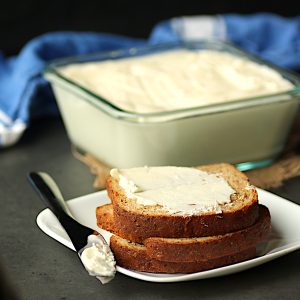
Homemade Spreadable Butter
Ingredients
- 1 pound salted butter, softened at room temperature (see note)
- 1 ½ cups neutral flavored oil (eg. canola or vegetable oil)
Instructions
- Place the softened butter in a food processor or bowl of a stand mixer. Mix until the butter is very soft and at a whipped consistency.
- Add the salt (if using) and slowly drizzle in the oil with the food processor running. Once the oil is added, scrape down the sides of the bowl as needed and mix again until the mixture is a smooth consistency (note: at this point the spreadable butter will be very runny. Once it it chilled it will solidify to a spreadable consistency).
- Pour into large airtight container and chill completely. Store in the fridge for up to 1 month (if you think it will take you longer to use this amount of spreadable butter, pour into two smaller containers and store one in the freezer). Use as needed replace butter/margarine as a spread, or in recipes.
Notes
Nutrition
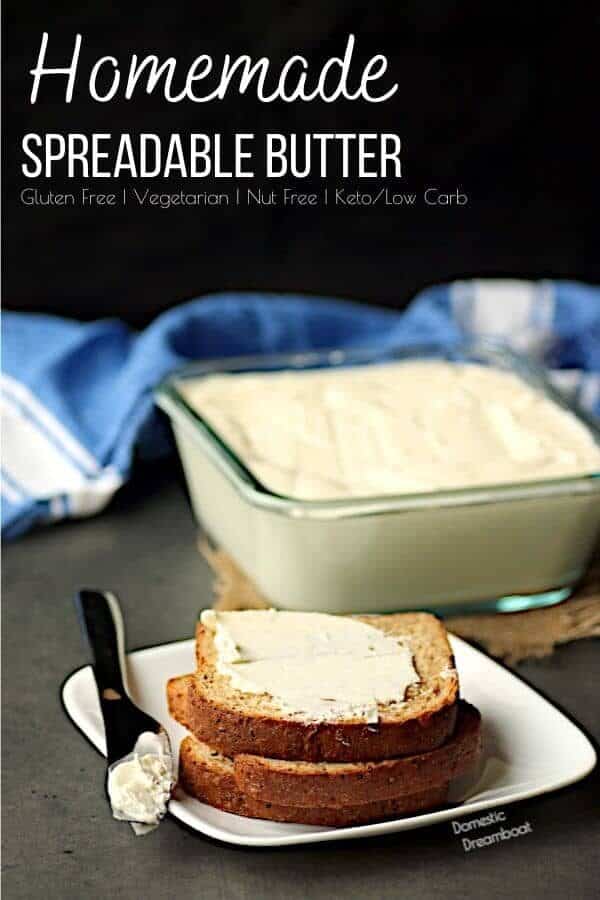

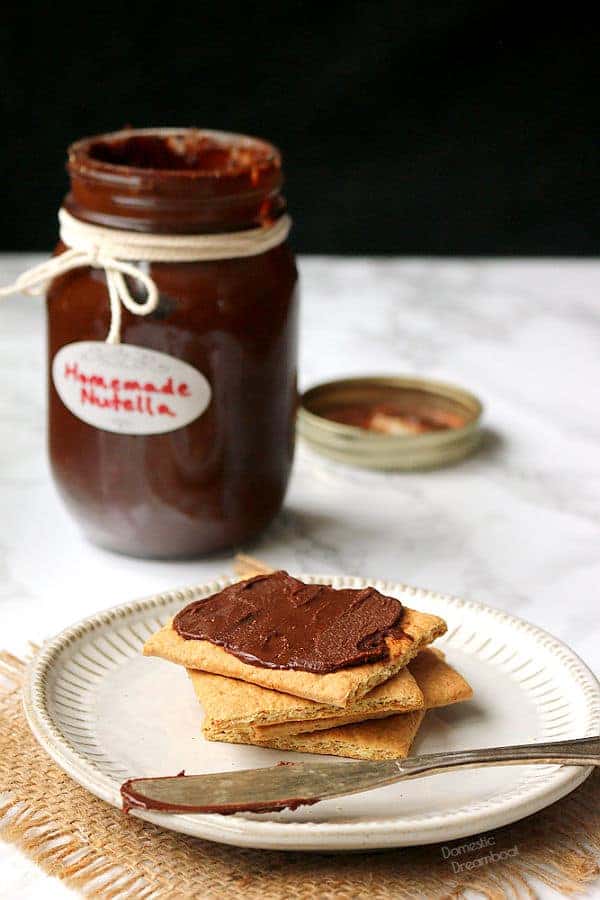
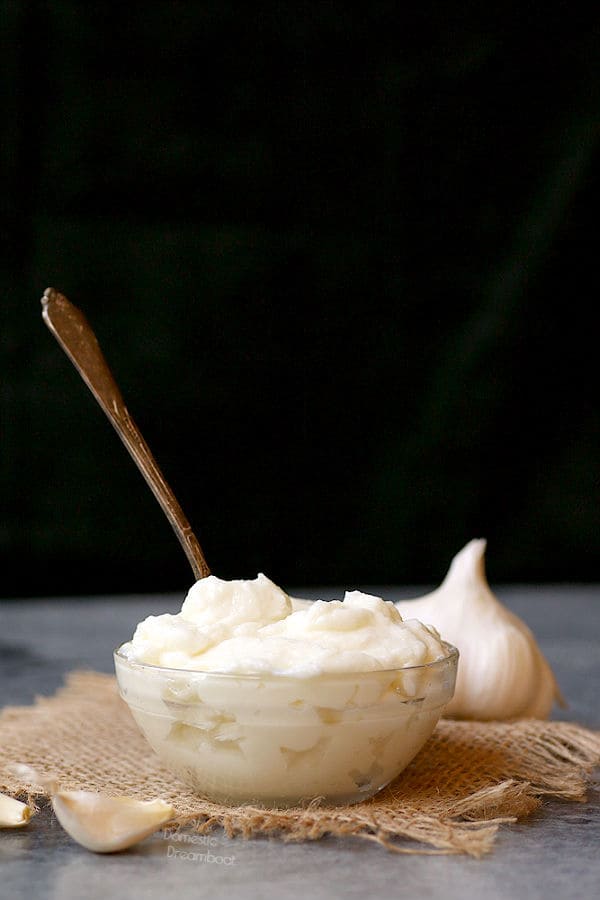
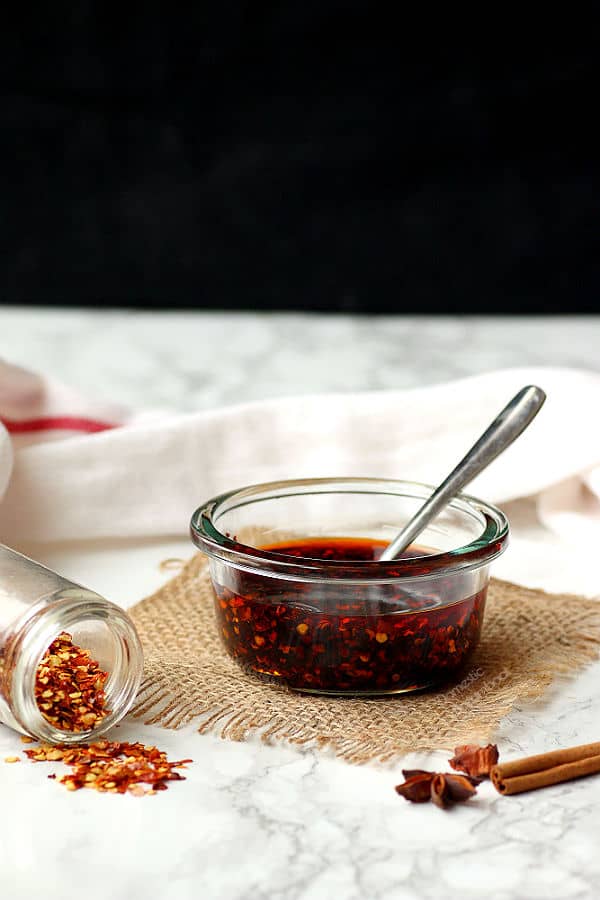




Lori
I had searched online for this some time ago with no luck. Not happy with my experiments, I gave up. Now, while searching online for another recipe, I saw this link and I HAD to click on it! I have one pound of butter left and have to make it last because butter, where I live at least, recently jumped in price.
Thank you so much for sharing 🙂
Carissa
I hear you - butter is so expensive where I live now too. But then again, so is the oil that I use to make this as well 🙁
cassandra
I will be using this recipe to help cope with this year’s butter shortage and surge in price. Thank you! 🧈 💖
Muffin
Can you use olive oil?
Carissa
Absolutely! Just note that if you use a stronger flavored olive oil, like EVOO, the olive flavor will be more prominent, and you'll be able to taste the butter flavor less.
Karen
Thrilled to have found the recipe, and such a simple one (there are apparently no spreads sold in the country where I'm staying). I used the given measurement, but it turned out a bit too runny (I reckon butter consistency can differ across the globe), so will add less oil next time.
Carissa
Yes, the spread is definitely very runny when it's initially made. However, once you put it in the fridge, it solidifies to the perfect consistency. I will make this more clear in the recipe. Thanks for the comment.
Tommyboy
I use !/3 cup canola and 1 teaspoon water. oil to 1/4 lb. butter
Tamara
Brilliant. Trying my best to keep plastic containers in my household to a minimum. Thank you!
Mary-lyn
I reduced the amount of oil to 3/4 cup and it worked well
Laurette
Can you just PLEASE research why canola oil, and all those vegetable oils, are so bad for you! Nothing to do with saturated or not. All to do with how is processed and the molecular changes. Asking you to research yourself so that it becomes knowledge that you own
Carissa
I have done my research on this topic. In fact, in University, I took an entire course on how to do nutrition research and how to be able to weed out reliable sources of infomation from the vast pool of infomation that is out there. The lastest peer reviewed research written by nutrition professionals or scientists is not the same thing as wellness influencers who are likely trying to sell something. I am confident in my knowledge of this, but if that changes I will update my recipes to recommend a different ingredient.
Hannah
Hi Carissa, I think the original post was possibly correct and is also the reason I won’t be making this recipe with seed oils. In Australia the medical profession and food/ health scientists recommend avoiding these oils due to the processing and the way that changes the structure. Olive oil is less processed thus it is considered safer. It has been linked to eye health. Nothing to do with nutrition research or food bloggers and influencers it’s medical research.
Carissa
A couple of quick searches ("seed oil safety Australia" and "seed oil research Australia") did not lead me to find any studies or guidelines that you mentioned, but if you have any links to provide, I'm happy to have a look.
Maybe the structure changes you're referring to are the formation of trans fats, which occurs during hydrogenation, and also to some extent under high temperatures.Trans fats definitely are unhealthy, and at least in North America, are not generally allowed to be added to foods anymore. Trans fats are unlikely to form in home cooking to a significant extent from any type of fat or oil.
You comment regarding eye health is a little unclear on which fat specifically you mean is linked to eye health, but I assume it's omega 3 fats, which are present in small amounts in some seeds oils as well as olive oil, but comes mostly from fatty fish, as well as walnuts, hemp hearts, chia seeds, and flaxseeds. It is true that most people don't get enough omega 3 fats.
Aside from that the research on seed oils remains inconclusive and in my opionion, does not support a total avoidance of seed oils. You are definitely free to use whatever oil you want. For me and my family, we are not eating seed oils in large amounts. When I make a batch of this Spreadable Butter wtih canola oil, it lasts my family 2-3 months. I use small amounts olive oil,canola oil, and some butter in my cooking and baking, depending on what I'm making. Nutrition research still supports limiting saturated fat for heart health, which are often found in animal fats like meat and dairy.
ML
My favorite organic tub butter with oil has been discontinued so when I decided to try and make my own with organic stick-butter and my own oil, I was so happy to find your resource/recipe. Just tried this method (with your suggestions for the ingredients and amounts of each) in my food processor - the results are now in the refrigerator "setting-up." Looks great and the sample I tried tastes good too.
Thank-you.....this was so easy. 🙂